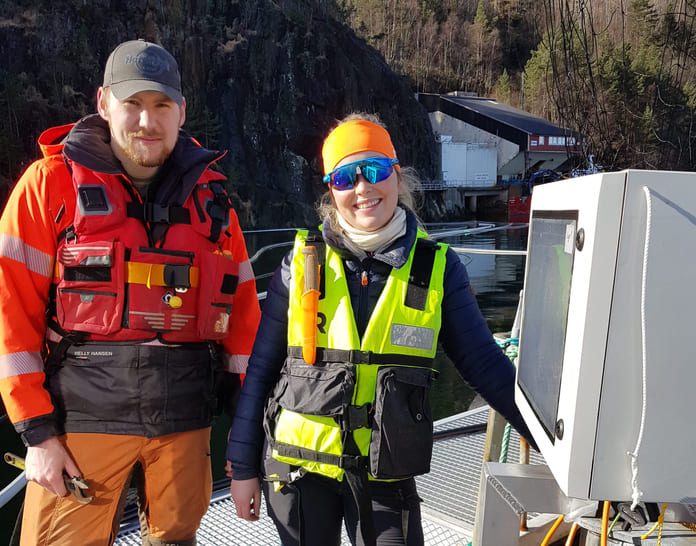Improved precision feeding technology that reduces feed waste in aquaculture is expected to emerge from new research project.
The project is launched by researchers at University of Bergen and the Institute of Marine Research, together with salmon producer Lingalaks and aquatech company Bluegrove.
“The NoFood2Waste project is all about applied research with a clear target. We will develop an improved appetite-controlled feeding system for sea-based salmon farmers that will reduce feed cost, which currently makes up 40-50% of costs in the most advanced fish farms. In turn, this will improve fish health and welfare, reduce both pollution and the use of scarce resources to produce and transport the feed, and provide more meals for the world’s growing number of people. This is what reduced feed waste means in the real world,” said Øyvind J. Korsøen Ph.D, project partner and biological expert in Bluegrove.

“We will employ the best tools, the most advanced techniques and insight in fish biology and physiology in our quest to better understand the interaction between farmed salmon, the feed they consume, and the environment in which they live,” he added in a press release.
Three-year
The three-year research program, which is also supported by salmon farmers and other universities, will seek to improve existing, already commercially available and value proved technology that feeds fish on demand. This tech currently observes fish behavior and analyses it in ways that enable farmers to understand exactly when the fish is hungry, and exactly when they have had enough to eat.
“Our sensors and software already monitor and estimate appetite and feeding response. Working with a multi-disciplinary research team that includes biologists, computer scientists and a number of other experts, we will now monitor additional parameters that indicate appetite levels,” said Korsøen.
Researchers will combine empirical data from underwater acoustic sensors that observe fish in cages in real-time, with the biologists’ understanding of fish. This will help them analyze how behavior, size, growth, condition, and other parameters are affected throughout the salmon’s lives.
The field research will be supplemented with lab research. Scientists will dissect fish to look at brains, digestive tracts, muscles, and other organs to better understand how fish appetite is regulated, and whether they are able to take full advantage of the nutrients they consume.
Insight
This insight will be used alongside findings of how the feed intake varies throughout the year and is affected by environmental factors such as light, temperature and oxygen levels, or the presence of algae.
“We are aiming for a holistic understanding of what is going on out there on a commercial farm during all kinds of weather and throughout the seasons. This is not meant to be merely a theoretical exercise. We expect to be able to deliver a series of holistic solutions that pragmatic farmers will embrace,” said Floriana Lai Ph.D., project researcher working at the University of Bergen.
The project is divided into many steps. The first step is starting at site Bergadalen, Western Norway, a farm with eight 35x35m cages equipped with 37m deep nets, owned by fish farmer Lingalaks, which already used the Bluegrove solution on another commercial site to optimize feeding.
“Lingalaks just put smolt into their sea cages and had the technology installed. We will now focus on mapping and documentation of the parameters that we will later use to control the feeding,” said Ole Folkedal Ph.D., researcher at the Institute of Marine Research. Ole Folkedal is the inventor of the early version of the echo feeding technology that is a key part of the tech package employed.
“We have begun to gather information over the last weeks that will provide us with new insight into the interaction between parameters that relate to environmental conditions, to the salmon’s body condition factor and growth, different feeding regimes, and feed conversion ratios,” said Folkedal.

Feeding salmon at sea
The project aims to develop, validate and test programs for control of feeding salmon at sea, based on the data from the tech package under different environmental conditions.
The development of hydroacoustic sensors will contribute to real-time monitoring of the salmon’s vertical and horizontal behavioral patterns and appetite. This will in time make it possible to develop an integrated feeding control system that combines all this information in ways that optimize feeding strategies.
“In old-fashioned fish farms, it is common to pour too much feed into the cages. This is expensive, not sustainable and doesn’t help animal welfare. Better technology will help reduce this waste, which is essential, in part for economic reasons and to reduce environmental footprint, but also because there is a global shortage of resources required to produce the feed. Our ultimate goal is to not waste any feed at all,” said Lai.

